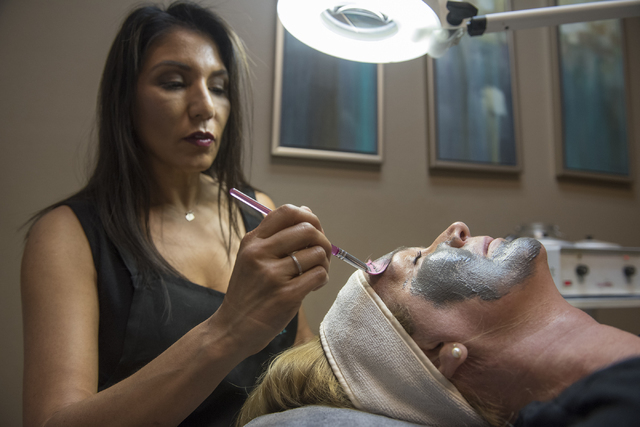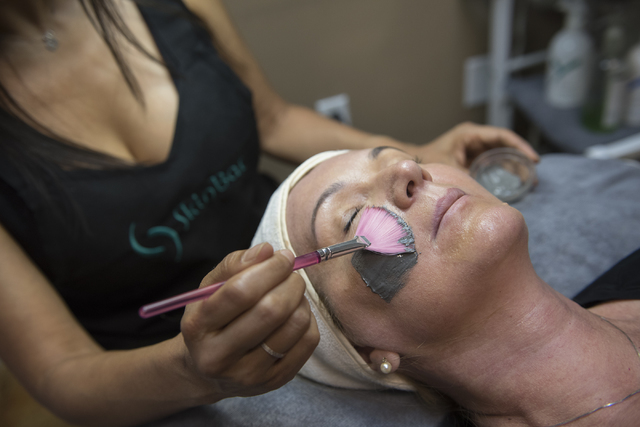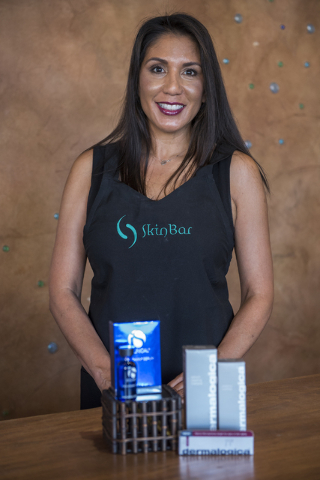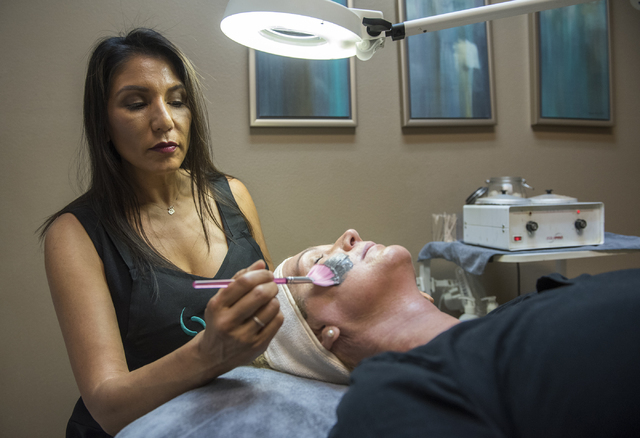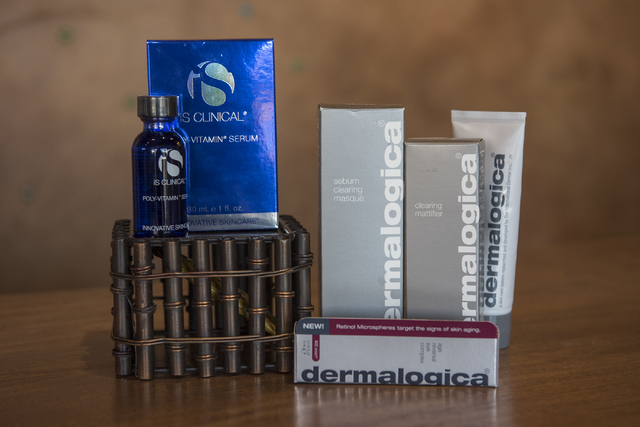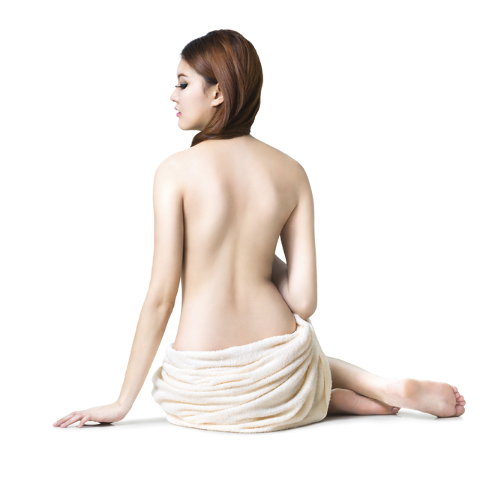Studies vitamin niacinamide could be effective against aging
One of the more recent, and more promising, breakthroughs in the anti-aging battle is a close relative of the humble vitamin niacin — the kind found in fortified cereals and other foods.
Known as niacinamide, this form of vitamin B3 (niacin)is gaining momentum as an effective ingredient for improving skin’s texture and appearance.
For decades, niacinamide has been used as an oral supplement for the treatment of inflammatory skin conditions, such as acne. But by including the ingredient in topically applied lotions, serums and creams, the number of new skin-care products containing the ingredient has soared. A search of Amazon.com using the sole word “niacinamide,” in the beauty and personal care category, resulted in 888 product hits.
The topical benefit claims of niacinamide include: minimizing lines and wrinkles; reducing hyper-pigmentation; improving prevention of moisture loss through the skin barrier; reducing pore size; and improving dull and sallow skin tones.
The promise of smooth, flawless skin is big business. In 2014, Americans spent about $2.8 billion on skin-care products, according to statista.com.
Many of those products claim to have cosmeceutical properties. While the FDA does not recognize the term, the cosmetic industry has coined it to refer to cosmetic products that have medicinal or druglike benefits.
So it comes down to the question: Do all the lotions, serums, toners and creams with niacinamide really work? Or is it just advertising hype?
PASSING THE KLIGMAN TEST
Dermatologists Jacquelyn Levin, Saira B. Momin and James Del Rosso of Las Vegas reviewed published scientific data on the common cosmeceutical ingredients niacinamide, retinoids, kinetin, soy isoflavones, soy protease inhibitors and green tea in the Journal of Clinical and Aesthetic Dermatology in February 2010. They sought answers to what many professionals consider the “gold standard” questions posed by Dr. Albert Kligman, the recognized father of cosmeceuticals, about the scientific rationale for ingredient use:
1. Does it penetrate? Is the active ingredient able to reach in significant concentrations, the deeper layer of the skin, the stratum corneum where the cellular changes occur?
2. Do we know how it works? Is there a known scientific mechanism of action?
3. Does it show clinical significance? That means published, peer-reviewed, double-blind, placebo-controlled, statistically significant clinical trials, not anecdotal or manufacturer’s claims.
The authors concluded, “Niacinamide is probably the closest ingredient investigated in this review to satisfy the three major questions in cosmeceutical ingredient analysis.”
CONSUMER TIPS
There are a few things for consumers to consider when incorporating niacinamide into their skin-care regimen.
“You want to look at the whole picture when it comes to products, not just the specific ingredient,” advises Lynda Moore, local licensed aesthetician.
Preparations come in varying degrees of concentration, ranging from 2 percent to 10 percent. Moore emphasizes the need for ingredients to work synergistically.
For example, an alcohol-based product would be at odds with niacinamide as an ingredient.
“Alcohol is very stripping to the skin so it is going to negate this product because niacinamide is trying to help with hydration to the skin,” Moore explains.
For Moore, a teenage and young adult acne sufferer, proper skin care isn’t a luxury — it is a necessity. An aesthetician for 28 years, Moore moved to Las Vegas from California in 1996. Prior to the opening of the Skin Bar in Henderson, Moore worked with Dr. Howard Murad, the founder of Murad Inc. The skin-care pioneer holds 19 patents for advances in the science of skin health.
“We live in the desert so our moisture evaporates into the air,” Moore notes. “You could put on moisturizer day and night and you still have that trans-epidermal water loss. This (niacinamide) actually helps to strengthen the barrier function of the skin.”
CAUTIONS
A consultation with an aesthetician or a dermatologist may be a good place to start when deciding which product to use.
Moore cautions, “It’s an expensive ingredient. So when you see niacinamide in a product, it’s not a two-dollar eye cream.”
Also, changes don’t happen overnight. We want to see immediate results and when we don’t, we assume the product doesn’t work.
“We want that (overnight) miracle,” Moore says. “When our skin cells turn over about every 28 days, they are going to see results in about a month — give or take.”
Moore encourages clients to take a selfie before starting a product then another one in two months to evaluate improvements.
Does this mean we can sunbathe, smoke, not exercise, stay up all night, eat unhealthy foods and still have great-looking skin as long as we use niacinamide?
No, niacinamide is not a magic potion.
“In addition to photoprotection and proper sunscreen use, which are extremely vital to healthy skin, inclusion of niacinamide in well-formulated skin-care products may help to maintain skin integrity and barrier protection, both of which are needed to keep skin smooth and healthy,” says Del Rosso, clinical professor of dermatology at Touro University Nevada and dermatologist at Lakes Dermatology.
IMPORTANCE BEYOND WRINKLES
With one in five Americans developing skin cancer in their lifetime, the research into finding effective, low cost, easy to administer, preventive agents has never been more important.
According to a recent report by Australian researchers, Diona Damian, Andrew Martin and Gary Halliday, published in the Spring 2016 Melanoma Letter, a publication of the Skin Cancer Foundation, niacinamide (also known as nicotinamide) is being studied as a pre-cancer and nonmelanoma chemopreventive agent.
In the past year, the researchers observed that both oral and topical nicotinamide replenish the cellular energy repair processes in the skin after normal metabolism or UV sunlight has depleted them.
This promising research suggests that nicotinamide “can significantly reduce recurrences of actinic keratosis, basal cell carcinoma and squamous cell carcinoma in patients with a history of these lesions,” wrote editors of the Melanoma Letter, Allan C. Halpern and Ashfaq A. Marghoob.



